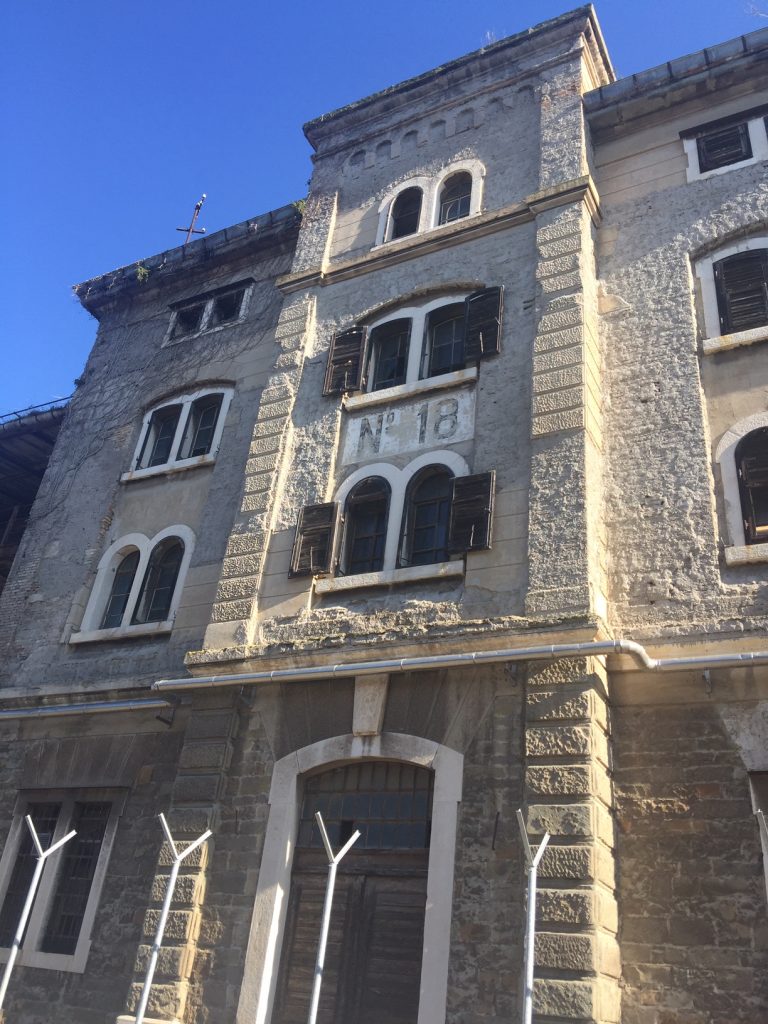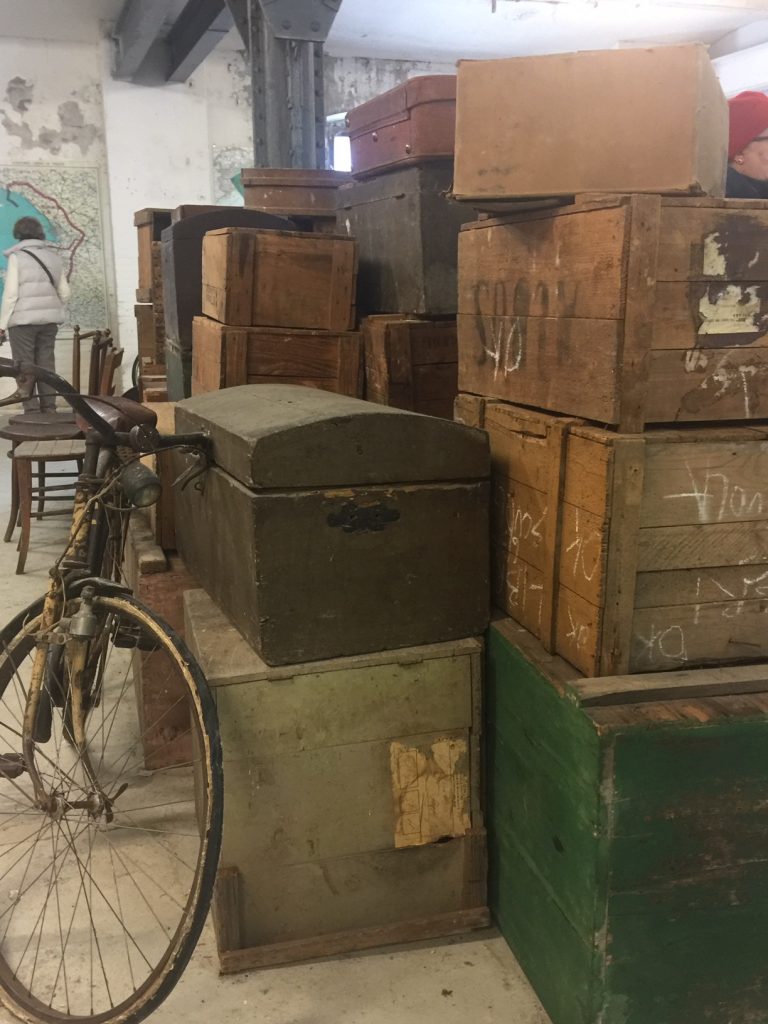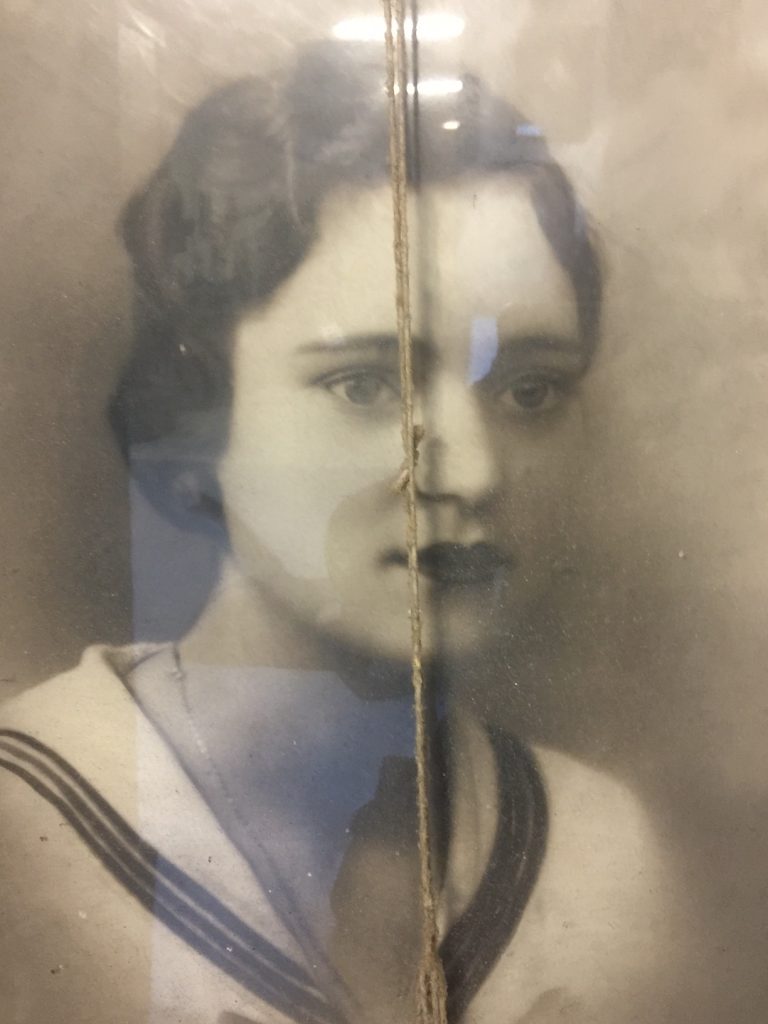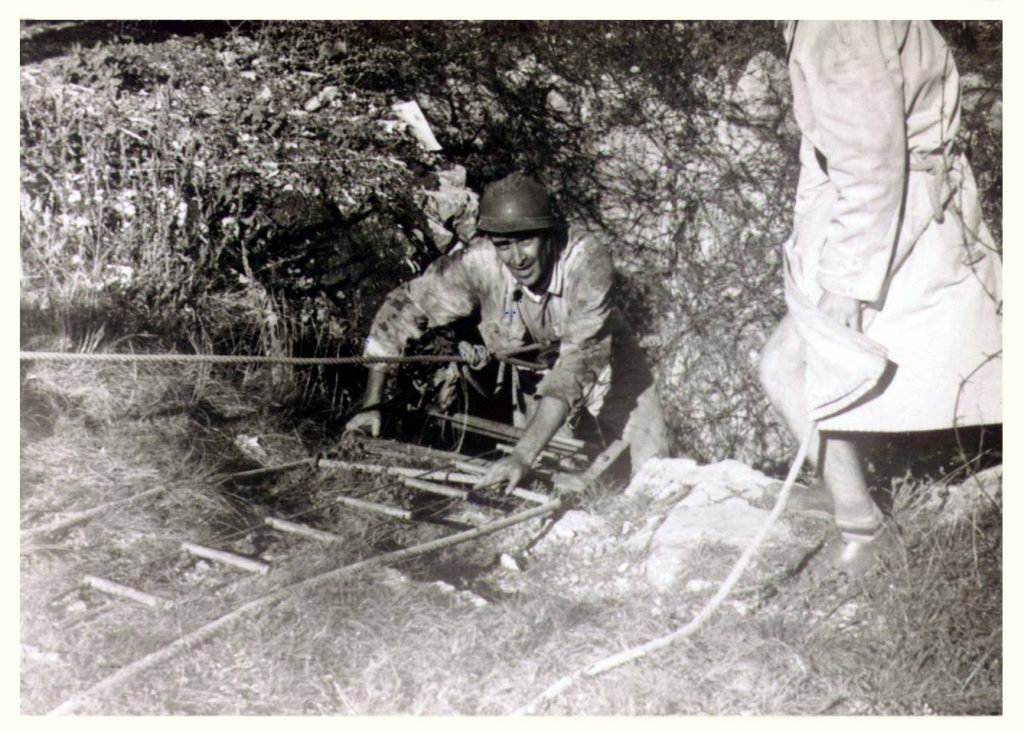
by Alessandra Ressa
In a remote and inaccessible part of Porto Vecchio (the Old Port of Trieste) there is a “place of remembrance” that very few people today know about, that holds behind its cold stone walls the pain and tears of thousands of refugees.
It is called Magazzino 18 (Warehouse #18) and its story is particularly touching. It tells of an enormously painful but often forgotten page in the history of Italy and Trieste. Magazzino 18 contains what remains of the lives of Italians who were forced to abandon Istria and Dalmatia after WWII.

The exodus isn’t commemorated here with imposing monuments or impressive collections of documents, but with small, humble objects that belong to everyday life.

A chair, stacked up with many others, bears a name, initials, a number, and the words “Exodus Service”. Similarly catalogued are wardrobes, beds, kitchenware, photographs, simple toys, other objects, and names. Common things that accompanied the passage of so many lives: a passage abruptly interrupted by history, by the exodus. Why haven’t they been claimed?

Soon after the end of WWII, with the peace treaty of 1947, Italy lost vast areas of Istria and the coastal strip, and nearly 350,000 Italian people – faced with an intricate situation fraught with danger, including summary execution – chose to leave the land of their birth, which soon after became Yugoslavia, and continue their lives in Italy and abroad. A few stayed behind and suffered retaliations and discrimination.
Many of the refugees stopped in Trieste and were housed in decrepit camps that often bore the sinister aspect of concentration camps. Some remained there for more than 20 years. Others proceeded further to other Italian destinations in packed freight trains.
Few managed to migrate abroad, mainly to Australia, the U.S. and Canada. While in Italy, whether traveling to other destinations or settling into camps and other emergency structures, many suffered discrimination by liberated Italians who believed them to be supporters of the fascist regime. It is difficult to imagine what these families must have suffered, their anguish, fear and uncertainty while they packed up the few belongings they had and left their cities, homes and roots.

As they had to travel light and were accommodated in temporary shelters, many of the refugees had to leave their belongings in a warehouse in Trieste, Magazzino 18. As often happens with refugees forced to move from place to place, all their things stored in the old port were never claimed. After almost 70 years, many of these belongings are still there, forgotten, silent, and gnawed away by moths.

A few years ago, the forgotten objects of Magazzino 18 were partly rearranged into a temporary exhibit and opened to small groups for sporadic visits. The site became very popular among Triestini thanks to a beautiful theatrical piece by actor and musician Simone Cristicchi. Many of the descendants of the exiles were thus able to step back in time while walking the huge, silent warehouse filled with forgotten property. Magazzino 18 offered a glimpse into the everyday life of a society swept away in a heartbeat, like a modern Pompei.

I was among the lucky few who managed to visit Magazzino 18 last year, shortly after the deteriorating building was judged unfit to host the assemblage. It was impossible for the volunteers to consider renovating the site, where water leaks were damaging part of the collection. The exhibit received no public funding and relied solely upon volunteers for the up-keep of the site and providing visits.

Renovations in Porto Vecchio last year offered an opportunity to transfer the collection to Warehouse 26, where several museums and exhibition halls have recently opened. This painful visual testimony of the exodus was ideally supposed to be available for visits once again in spring 2021, although due the pandemic it may take longer before the transfer to the new premises, carried out by IRCI (Istituto Regionale per la Cultura Istriano-Fiumano-Dalmata), will be completed. IRCI has its own museum in via Torino 1.

February 10th is the National Memorial Day of the Exiles and Foibe. In Trieste, this recently established commemoration has become a pretext for political controversy and an excuse for extreme right-wing demonstrations.
The foibe refers to mass killings mainly in Friuli-Venezia Giulia, Istria, and Dalmatia during and after WWII of the local Italian population. Many Italians who lived in what are now Slovenia and Croatia (it was Italian territory then) were thrown, often while still alive, in narrow Carsic pits or gorges called foibe.

It is estimated that as many as 15,000 Italians were tortured or killed by those who occupied the Istrian peninsula during the last two years of the war. Hundreds of foibe were used both on the Italian and Slovenian side of Carso. Some have recently been discovered in Slovenia.
Italian minorities survive to this day in many areas of Istria, where you can still hear a unique dialect spoken that hasn’t managed to survive anywhere else. Every year in Trieste a commemoration ceremony takes place at Foiba di Basovizza, where many people were murdered.





























Thank you for this excellent article. I had heard of Magazzino 18 before but your explanation of the Exodus really helped my understanding. I have shared the article also. projectancestry.com (Genealogy – Friuli Venezia Giulia, Slovenia & Austria)
Indeed a sad story yet we, residents of this one earth, seem to not learn anything from history. The coming war in the Ukraine seems to be wrought with the same poisonous dynamics of nationalism, racism and leadership cult that caused these tragedies; and more than likely these dynamics will disperse (and kill) tens of thousand of civilians as politicians play out their megalomaniac ambitions. Not one article in the press in Italy, at least here in Trieste, that i read tied the foibe story to current events. Will we EVER learn?
Thanks for the article!
[…] an exhibition about Istrian, Fiuman and Dalmation exiles who were forced to abandon their belongings in Trieste will soon be up and running at Magazzino 18. […]